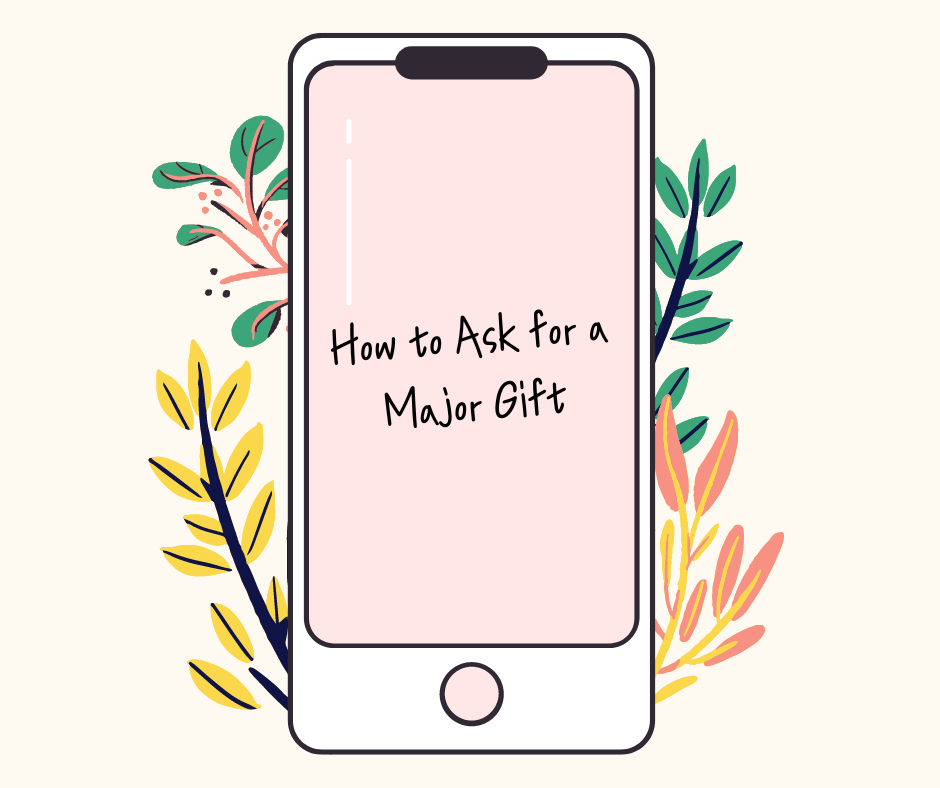Asking for a major gift can sound scary and overwhelming.
When it comes to asking for a major gift, the steps are quite simple. Don’t let anxiety complicate the process.
Here are your three steps: Dig, Call, & Meet
Dig
Do your homework 🤓. Get yourself up to date on your donor’s personal life and recent interactions with your organization.
Look at your major donor's giving history. Where is your donor in their giving lifecycle? Have they donated recently? If they have, did they receive more than a thank you receipt? What have you done in the way of stewarding them?
What gets your major donor excited about your organization? Do they seem to favor specific projects or programs? What have they given to in the past?
Make sure you know what’s important to your major donor on a personal level. Do they have children? Did one recently graduate from college? Did they move recently? Take note of these personal details to ensure your donor feels know, seen, and valued by you.
Fundraising centers around relationship building. If your donor donated recently, but they’ve not received a customized update to demonstrate what their gift has done, it’s not time to ask for a gift yet. Report back to your donor, telling them what their gift accomplished. Ensure they feel valued and thanked. THEN you can head into an ask.
Call
Call your major donor. Ask to meet with them in person at a time and place that’s easy for them.
- It’s important you TELL your major donor that you're going to ask them for a donation. This will set expectations and eliminate the awkwardness that comes with ambiguity. It also communicates that you value your major donor’s time. You know they’re busy, so you want them to know what to expect.
- Inform your major donor you have some projects you’re working on. And you think these projects may be of interest to them. You’d like to meet to get their input and ask if they'd like to contribute with a gift.
- It’s as simple as that. Be sure to let them know the meeting would be short, around 20 minutes or so.
- It’s will take a few calls, texts, and emails to get a meeting set up. That’s okay and normal. You care about your beneficiaries. Your major donor does too. So keep at it until you get a yes or a no for an in-person meeting.
Meet
You have your meeting. Here’s how to structure it:
- Pretend this donor is your close friend and catch up on the details of their life. Spend about 5 minutes conversing.
Pro Tip: Mirror their facial expressions, body language, and choice of words. Mirroring builds trust.
- Present your fundraising offer within 5 - 8 minutes. Share the problem and need. Explain the solution to this problem. Then, tell the donor how their gift will perfectly solve this problem. Be specific when you ask for a gift. Ask for a specific dollar amount (or a gift range). It's important that you ask for more than you think you can get.
- Wait.
- And wait some more. Be quiet. Make sure you have water or coffee on the table, so you can sip and occupy yourself. DO NOT SPEAK. Let the donor speak when they’re ready. Give them time to think and don’t be discouraged by the discomfort you’re feeling. This is 100% necessary.
- Listen to what your donor has to say. Respond to their concerns. Try to respond with questions and comments according to what they’ve said.
- If they say yes, provide them with the details they need to make a gift.
- If they say no, ask questions. Is it not the right time for them to give? Are they no longer interested in this specific program? You can also follow-up with a few questions, asking for their advice and input. This will make your donor feel valued and keep lines of communication open.
- If they say maybe, tell them how and when you’ll follow up with them.
- End the meeting on time (20 minutes)!
- Be sure to take notes after meeting with your donor. This will help you further customize engagements and feel confident when you speak again.
It's as simple as that. DIG, CALL, and MEET. Your beneficiaries need you to be courageous and ask. And your major donors want to help. They've demonstrated that through their giving in the past.

Member discussion: